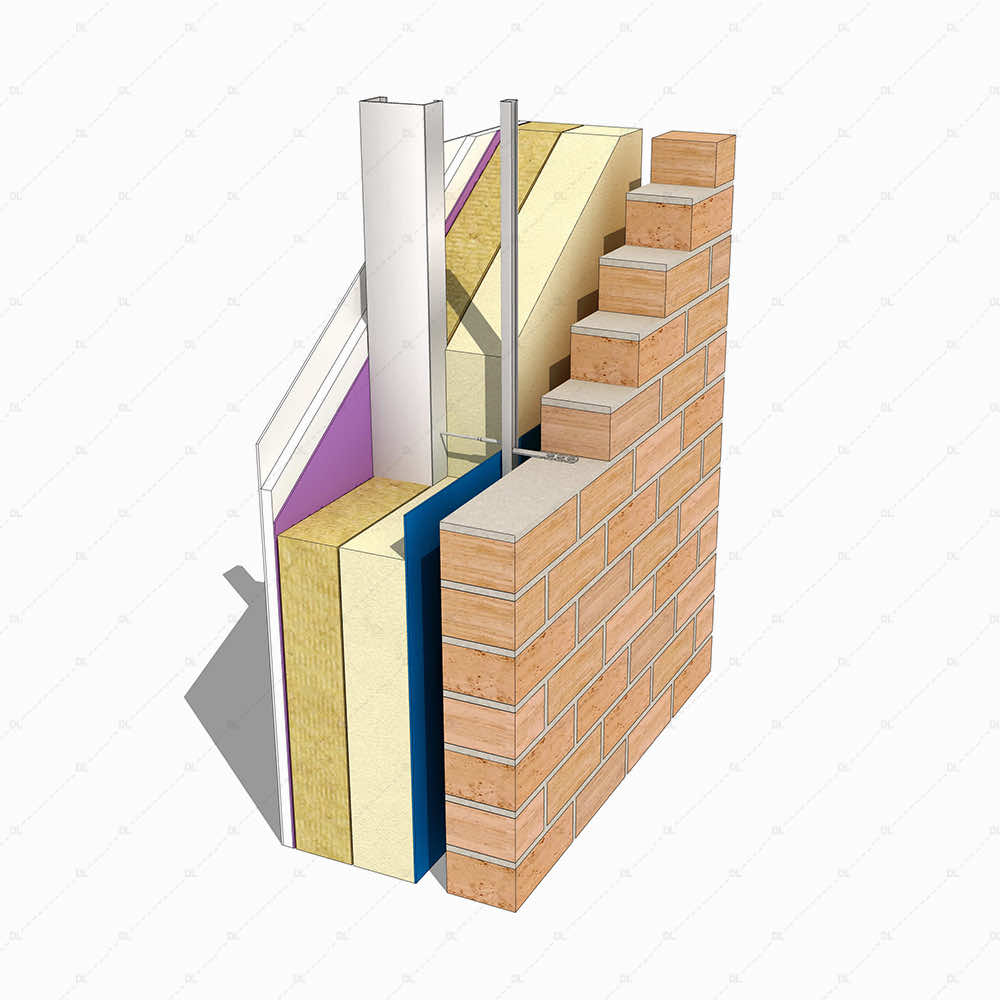
An air gap in an external wall system, particularly when cladding is secured on a Strukko light gauge steel frame, serves several critical functions. This space, often referred to as a “cavity” or “rain screen gap,” plays a vital role in moisture management, thermal regulation, and overall durability of the building envelope.
Functions of the Air Gap
1. Moisture Management: – Drainage and Ventilation: The air gap allows any water that penetrates the outer cladding to drain away, protecting the structural components from water damage. It also facilitates ventilation, which helps in drying out any residual moisture, thereby preventing mold growth and deterioration of materials. – Pressure Equalization: In some systems, the air gap helps equalize the pressure difference between the inside and outside of the wall assembly, reducing the risk of water penetration driven by wind pressure.
2. Thermal Performance: – Thermal Insulation: The air gap contributes to the thermal performance of the wall system by providing an additional layer of insulation. It can reduce heat transfer through the wall assembly, helping maintain consistent indoor temperatures and improve energy efficiency. – Thermal Bridging Reduction: In light gauge steel frame constructions, thermal bridging (where heat is conducted through metal components) can be a significant concern. An air gap can help mitigate this by providing a thermal break, reducing heat loss or gain.
3. Material Durability and Longevity: – The air gap helps prolong the lifespan of the cladding and framing materials by reducing the likelihood of water and moisture damage. This protection is particularly important for light gauge steel frames, which can corrode if exposed to moisture over time.
Design Considerations
– Size of the Air Gap: The recommended size of the air gap can vary depending on local building codes, climate conditions, and the specific design of the wall system. Typically, an air gap ranging from 20 to 50 mm (0.8 to 2 inches) is common, but specific requirements should be verified with local regulations and standards.
– Ventilation Provisions: Adequate ventilation openings at the top and bottom of the cladding system are crucial to ensure proper airflow through the air gap. This ventilation helps in expelling moisture-laden air and maintaining the effectiveness of the rain screen.
– Compatibility with Insulation: The type and placement of insulation must be carefully considered in the design. Insulation should not obstruct the air gap or impede ventilation, and it should be installed in a manner that complements the thermal and moisture management strategies of the air gap.
Conclusion
The air gap in an external cladding system on a Strukko light gauge steel frame is a fundamental component that enhances the building’s resilience against environmental elements, improves energy efficiency, and prolongs material lifespan. Proper design, implementation, and maintenance of this air gap are essential for the optimal performance of the building envelope.
